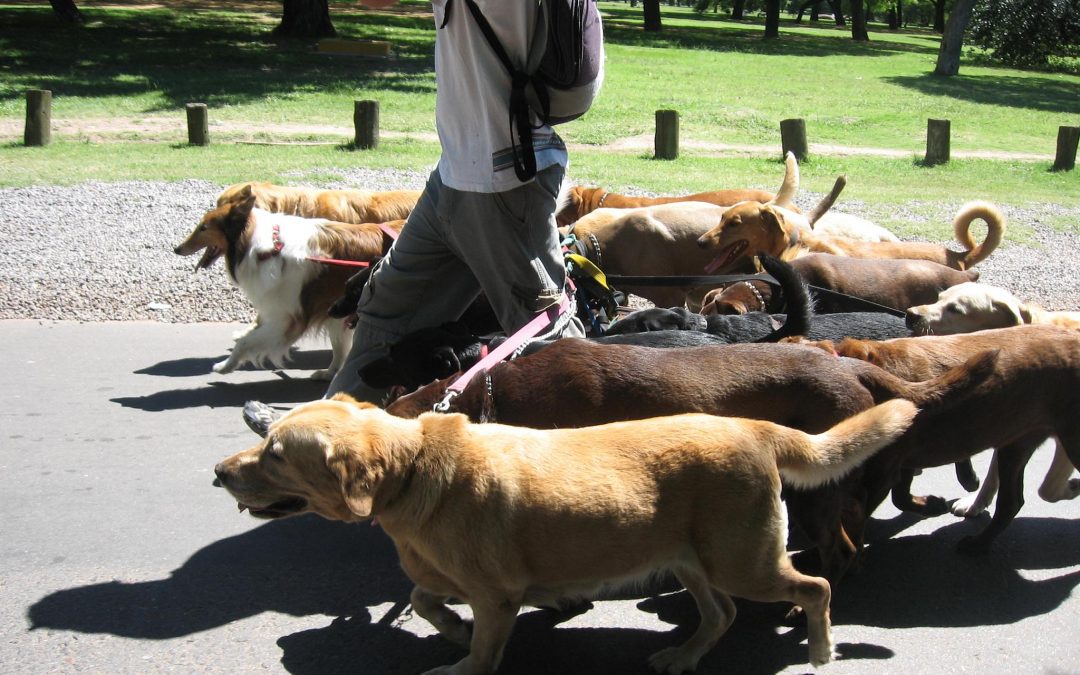Why such a basic post
Walking your dog seems like a simple enough task, right? It just doesn’t seem like this is a rocket science topic yet I see so many people struggling with their dogs when they have them on a leash. So, I thought a little insight, into this incredibly enjoyable time with your dog, may be in order.
It starts with respect
The first step, in training anything, or anybody, is respect. If your dog does not respect you, as alpha, then you are going to struggle with anything that you try to do with her. Dogs need a pack leader. If they don’t have one, they will take the role on themselves, and that is a bad situation for you and for him. There are many different ways to establish dominance with a dog and to let him know that you are, in fact, his leader. If you are starting from a place of not being the alpha, I recommend that you do a search on how best to accomplish this. Please make sure that whatever method you choose passes the common sense test. Also, if your dog isn’t responding to you, it’s okay to try a different approach.
In my opinion, the best trainings on establishing dominance is through positive reenforcement techniques. Shaming methods and physical forcefulness can create trust issues and skittishness between you and your fur-friend. This is not what we are trying to accomplish here. Always start off with the least aggressive approach and increase the pressure, if needed. I have found that more times than not, less is better.
What is the right collar
With the plethora of collar choices out there, choosing what type of collar to use can be a little confusing. Sometimes, the type of collar that you use needs to be determined based on the breed. For instance, dogs that are bred to pull things, like sleds, such as Husky’s, Malamutes, and other such dogs, do best by not using a harness. I agree that harnesses can add an extra level of security as well as not put undue pressure on the throat, but harnesses with bred-to-pull breeds just encourages them to follow their natural instincts, and pull. Pulling is absolutely not what you want when training your dog to walk with you on a leash.
There are the standard buckle collars that come in a wide variety of materials and colors. These are probably the most popular because they are the easiest to find and you have so many options. Most of my dogs wear these types of collars because I like them. However, I use a secondary training lead when teaching them to walk on a leash. I do not only use the buckle collar. The reason for this is that I do not like the amount of pressure that the collar puts on the dogs throat area, if they do pull. There can be serious, and even life threatening damage done to a dogs esophagus as well as the vertebrae in his neck, when they do a lot of pulling. I see people, all the time, being dragged down the sidewalk, with their dog putting as much pressure as possible on the collar side of the leash. This is not a good thing.
Probably the most commonly used training collar, that I have seen used, is a choke collar. This is most common in the chain form but is now available in nylon. These collars have their purpose, for sure, but you need to make sure that the collar is being used correctly. Incorrect use of these collars can cause more harm than good. The same rules apply with pinch collars. PLEASE ensure that you are taught how to use these correctly and never leave a choke collar or a pinch collar on your dog, continuously. Both of these collars are intended for training purposes, only.
A favorite of mine, and less known about, is the martingale collar. These collars are a cross between a buckle collar and a choke collar. Unlike the choke collar, these collars are okay to leave on your dog, permanently, as it does not completely tighten, like the choke collar does. There is only a small portion of it, about a quarter of the collar, that actually tightens. This is just enough to apply a little extra pressure but not enough to get your fur-love into trouble.
What I use
For several years, and with several dogs, I have used a Gentle Leader to teach my dogs how to walk on a leash without pulling. Each dog has moved along in this training at different speeds, but they have ALL learned how to lead successfully, using the Gentle Leader. This is a device that you use with your regular collar. It goes over the snout of your dog, around the back of their head, and then attaches to their collar. How it works is that when the dog pulls, the leader tightens around their nose. This is not a super comfortable feeling for the dogs, so they stop pulling. It’s really a super simple concept. It’s that whole “pressure and release” training technique that I am so fond of.
Another option to the Gentle Leader are the harness training leads. I have, personally, not had success with these, but I do know enough people who have, so it is worth mentioning. It works similarly to the Gentle Leader, but instead of applying pressure to the nose of the dog, it applies pressure to the dogs chest. This is also not a comfortable position for the dog to be in, so they stop pulling. If you do not like the thought of having something around your dogs nose, I would certainly suggest that you try a harness lead trainers.
Final thoughts
Bottom line is this: there are many options when it comes to training your dog to walk, correctly, on a leash. The most important thing to know is that it is vitally important to teach your dog to walk on a leash! Why? Taking your dog for a walk not only gets them out of the house and increases their daily exercise, but it is an amazing time to bond with your dog. Walking my dogs is absolutely one of the most enjoyable things that I do with them. It is spending one-on-one time with my best friends, and being able to truly enjoy that time, is imperative. You may not be excited about teaching your dog to shake, roll over, or speak, but teaching this valuable tool will completely change the relationship you have with your fur-baby!
Many blessings to you and your four-legged-love ~ Tammy


Recent Comments